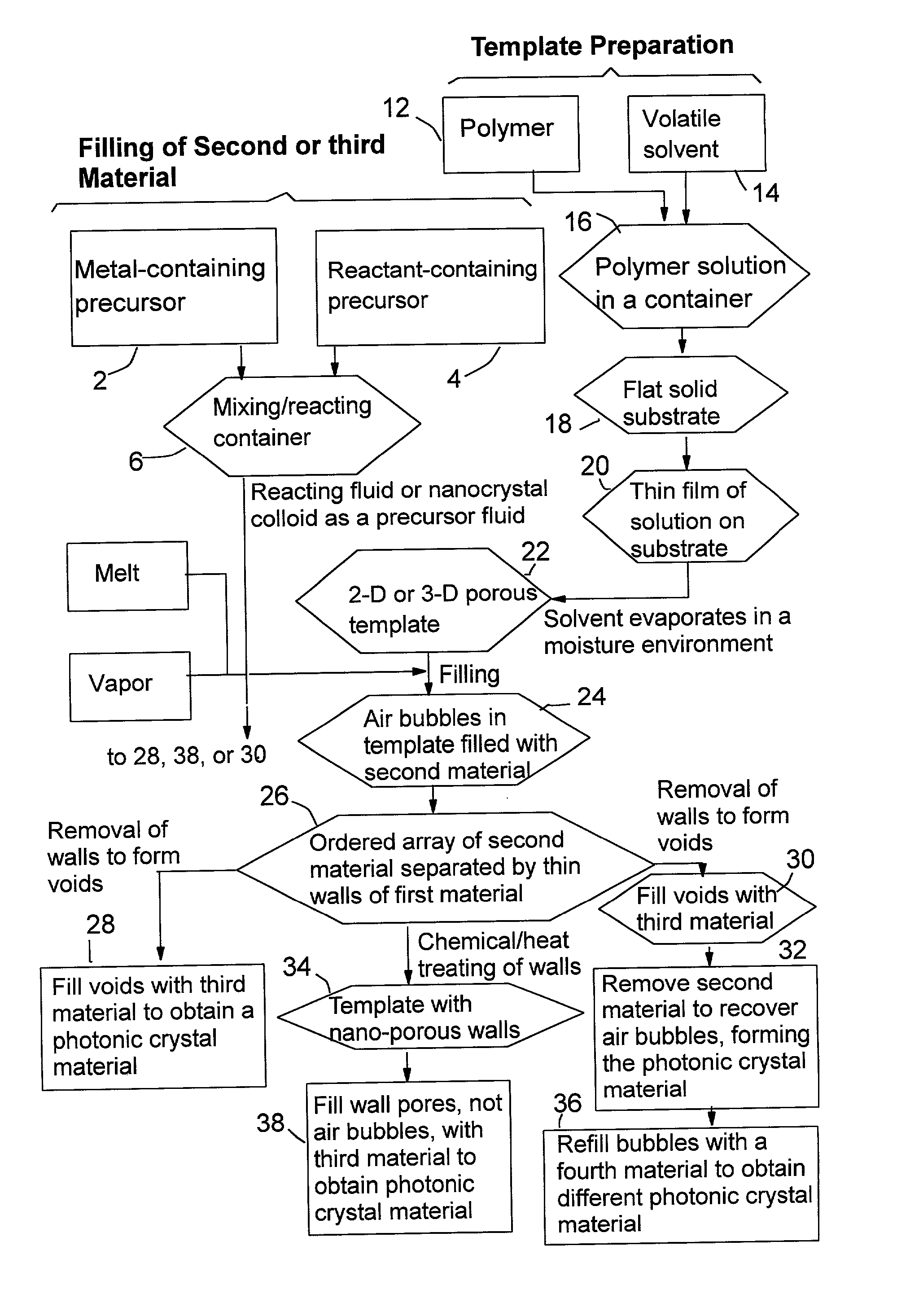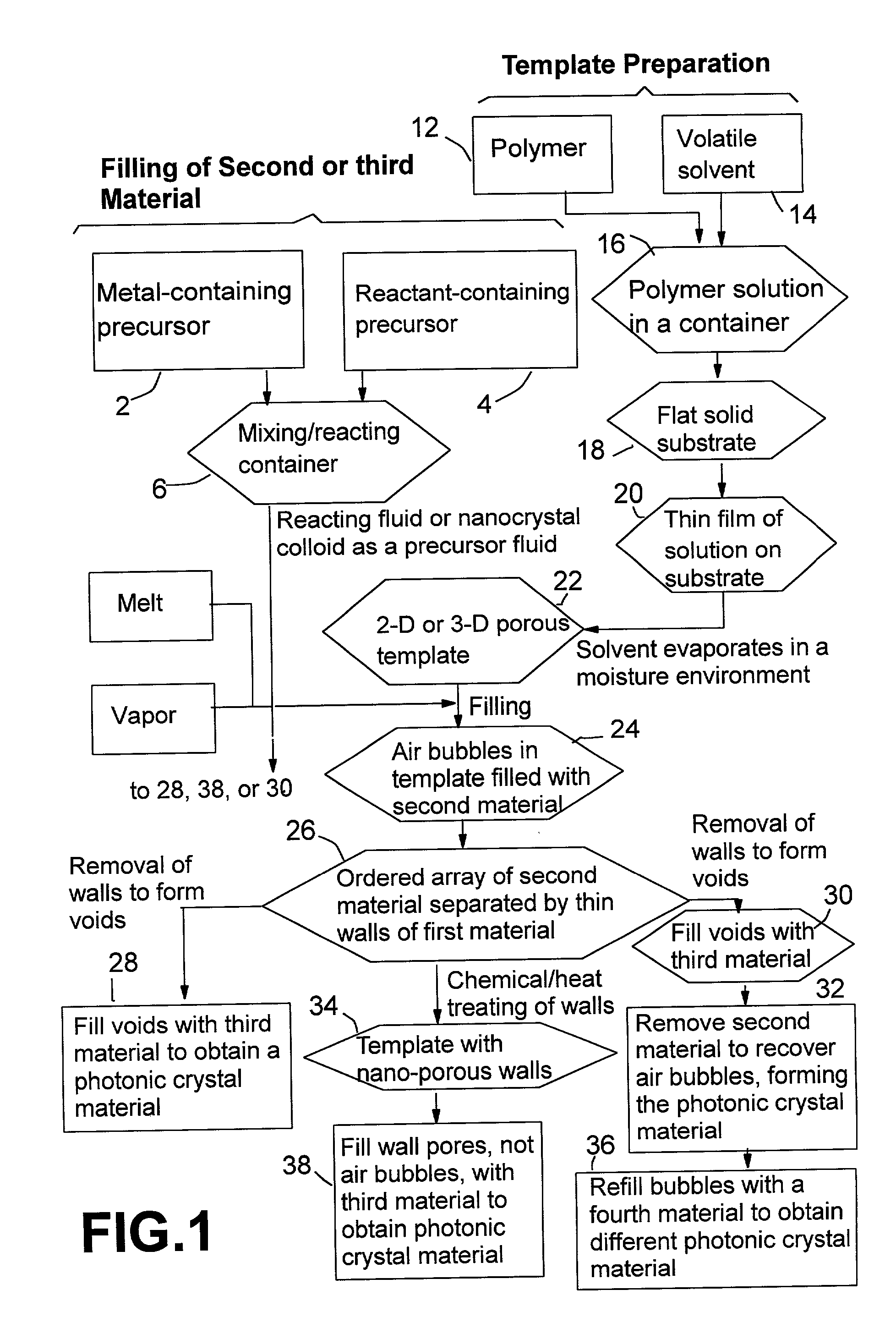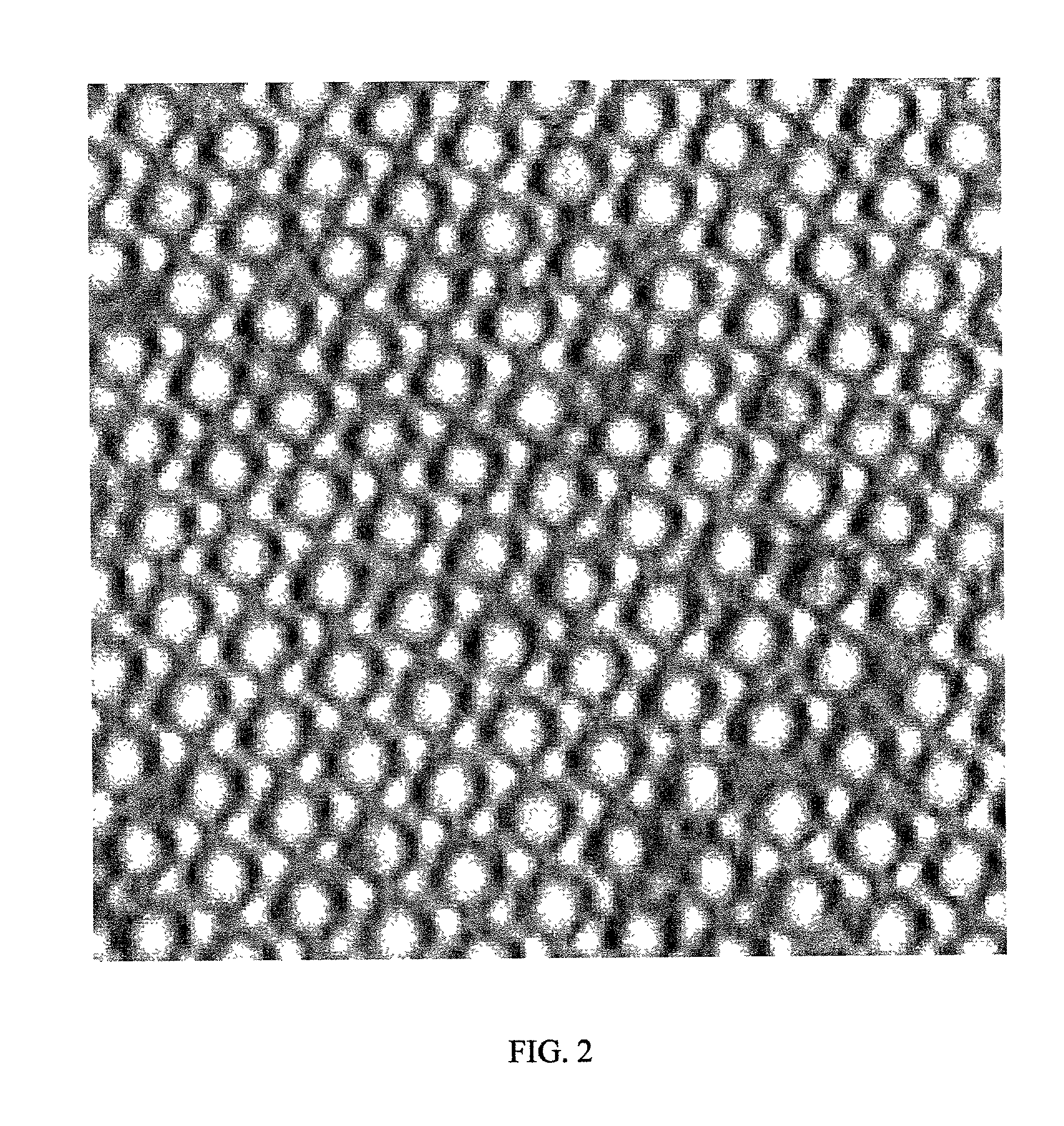Photonic crystals and method for producing same
- Summary
- Abstract
- Description
- Claims
- Application Information
AI Technical Summary
Benefits of technology
Problems solved by technology
Method used
Image
Examples
example 2
[0068] The TOP-based reacting solution prepared in EXAMPLE 1 was mixed with liquified (n-C.sub.8H.sub.17).sub.3 PO (tri-n-octylphosphine oxide or "TOPO") solvent maintained at the desired reaction temperature from 54.degree. C. to about 125.degree. C. under N.sub.2. The solution mixture was introduced into the voids in the template to generate TOPO-capped CdTe particles. After a nominal reaction period of from about one minute to about 60 minutes, in inverse relationship to the reaction temperature, TOPO-capped cadmium telluride particles were precipitated. The resulting film with a 2-D ordered array of air bubbles surrounded with CdTe crystals was washed with methanol and dried to obtain a photonic crystal material.
example 3
[0069] CdS particles were prepared by reacting CdI.sub.2 in methanol with Na.sub.2S in methanol at reduced temperature under inert atmosphere as follows:
CdI.sub.2+Na.sub.2S (in MeOH)CdS (particles)+2 NaI(soluble in MeOH)
[0070] The by-product of the reaction (i.e., NaI) is soluble in the methanol solvent while the product nano particles of CdS are not. During the chemical reaction, NaI salt is removed from the product mixture with the remaining CdS nano particles forming a stable methanolic colloid. The methanol colloid was poured into the voids created by removing the original pore walls from a porous polystyrene template on a glass surface. Methanol is then allowed to vaporize, leaving behind the CdS material trapped inside the voids.
example 4
[0071] Samples of photonic crystals containing III-V compound semiconductor nano crystals were prepared through the following route: First, (NaK).sub.3E (E=P, As) was synthesized in situ under an argon atmosphere by combining sodium / potassium alloy with excess arsenic powder or excess white phosphorus in refluxing toluene. To this was added a GaX.sub.3 (when E=As, X=Cl, I; when E=P, X=Cl) solution in diglyme. For the case of GaAs, the mixture was refluxed for 24 hours. The mixture solution was poured over the surface of a template containing voids that were earlier occupied by the walls. The solvent was then removed. The resulting composite film was washed with deionized water, which was used to destroy any unreacted arsenide and to dissolve the alkali metal halide products. In the case of the GaP reactions, an ethanol / deionized water solution was used for the same purpose due to solubility of unreacted white phosphorus in ethanol. The resulting film was then vacuum treated and the ...
PUM
 Login to View More
Login to View More Abstract
Description
Claims
Application Information
 Login to View More
Login to View More - R&D
- Intellectual Property
- Life Sciences
- Materials
- Tech Scout
- Unparalleled Data Quality
- Higher Quality Content
- 60% Fewer Hallucinations
Browse by: Latest US Patents, China's latest patents, Technical Efficacy Thesaurus, Application Domain, Technology Topic, Popular Technical Reports.
© 2025 PatSnap. All rights reserved.Legal|Privacy policy|Modern Slavery Act Transparency Statement|Sitemap|About US| Contact US: help@patsnap.com



